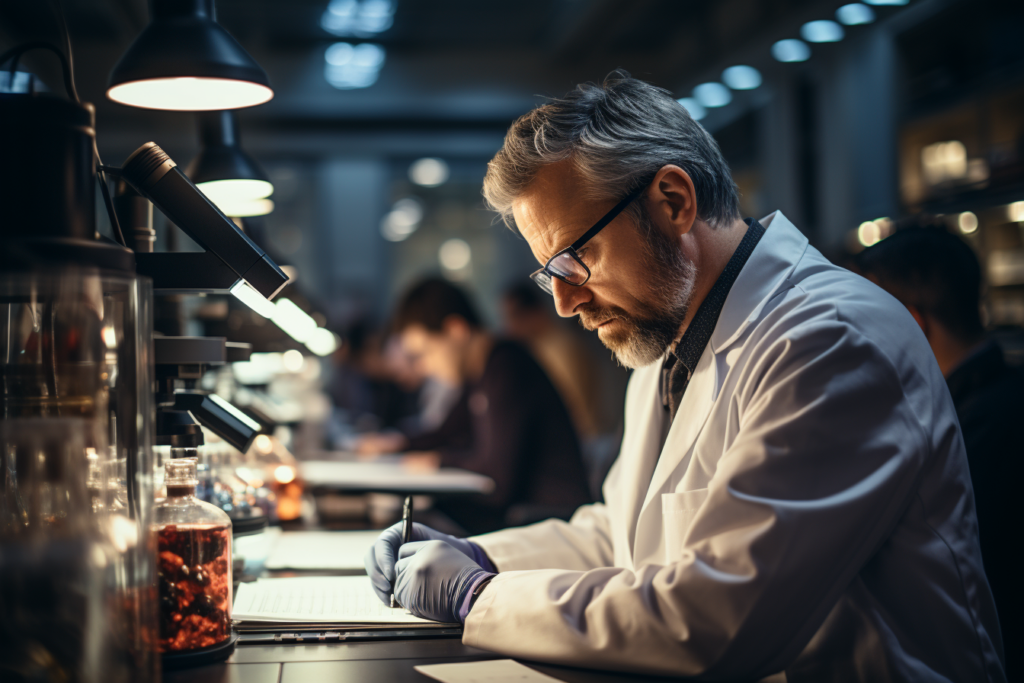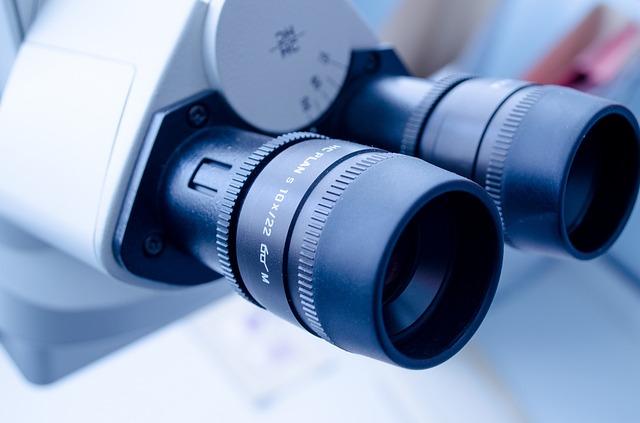Stem Cell Therapy in Wisconsin: A Comprehensive Guide for Residents
Welcome to the world of stem cell therapy in Wisconsin! Imagine a world where a damaged knee cartilage, much like a torn piece of paper, can be mended without the need for invasive surgeries. Or think of a scenario where, instead of replacing a worn-out battery, you could simply recharge it. That’s the magic of regenerative medicine. It’s all about harnessing the body’s natural ability to heal, repair, and rejuvenate.
Now, let’s take a journey through the scenic landscapes of Wisconsin. Just as the state is known for its lush greenery and pristine lakes, Wisconsin is also making waves in the realm of stem cell research. The University of Wisconsin-Madison, for instance, is at the forefront of this cutting-edge science. With institutes like the Cell and Regenerative Medicine Center and the Waisman Center, Wisconsin is not just about cheese and football; it’s about pioneering advancements in health and medicine.
For those of you in the Badger State considering a leap into the future of medical treatments, this is your guide. We’ll delve deep into what stem cell therapy is, how it can be a game-changer in treating various diseases, and why Wisconsin stem cell treatments might just be the right choice for you. Whether you’re looking to treat joint pain, back pain, or more complex disorders like Parkinson’s, the possibilities with stem cell treatments are vast and promising.
So, buckle up as we embark on this enlightening journey through the world of stem cell biology and regenerative medicine. It’s time to explore the potential of these tiny cells to make a big difference in our lives.

What are Stem Cells?
Let’s start with the basics. Imagine a construction site. Before the towering skyscrapers and intricate buildings come into existence, there are foundational blocks and raw materials that builders use. In the world of biology, stem cells are those foundational blocks. They’re the unsung heroes, the blank canvases that can transform into various cell types, much like clay that can be molded into any shape or form.
There are different types of stem cells, each with its unique properties and potential:
Embryonic Stem Cells: Think of these as the jack-of-all-trades. They’re the most versatile, capable of turning into any cell type in the body. It’s like having a Swiss Army knife in the world of cells.
Adult Stem Cells: These are more specialized. Found in various tissues like bone marrow and fat, they usually turn into cells of their origin. Imagine a seasoned chef who’s an expert in Italian cuisine but might not be well-versed in making sushi.
Induced Pluripotent Stem Cells: Science’s magic trick! These are regular cells that scientists have turned back into stem cells. It’s like turning a butterfly back into a caterpillar.
Now, why is Wisconsin so interested in these cells? Well, institutions like the University of Wisconsin and the Cell Biology and Regenerative Medicine Center see the vast potential in stem cells. They’re not just studying them for the sake of science but to revolutionize treatments and therapies. The goal? To harness the power of these cells to repair damaged tissue, treat diseases, and improve the quality of life for countless individuals.
In the realm of regenerative medicine, stem cells are the shining stars. They offer hope for conditions that were once deemed untreatable. From degenerative diseases to injuries, the applications are vast. And the best part? The procedures, like stem cell injections, are often minimally invasive, meaning quicker recovery and less downtime.
So, the next time you hear about stem cell therapy, think of it as nature’s toolkit, ready to repair, rejuvenate, and regenerate. And with Wisconsin’s commitment to this field, residents are in a prime spot to benefit from these advancements.

The Science Behind Stem Cell Therapy
Alright, let’s dive a bit deeper. Imagine your body as a bustling city. Over time, some buildings (or cells) get damaged, some roads (tissues) wear out, and certain areas (organs) might not function as they used to. Now, what if you had a special team that could swoop in, repair those buildings, repave those roads, and rejuvenate those areas? That’s essentially what stem cell therapy does for your body.
Stem cells are like the city’s repair crew. They have this incredible ability to become specialized cells, whether it’s for your heart, liver, skin, or even brain. It’s like having a handyman who can fix plumbing, do electrical work, and even paint your house!
Here’s a breakdown of how it works:
Repair and Regeneration: Just as a gardener plants seeds to grow flowers, stem cells can be introduced to damaged areas to repair or replace worn-out cells. For instance, if you’ve injured your knee playing soccer, stem cell therapy might help regenerate the cartilage, making your knee as good as new.
Treatment of Diseases: Some diseases damage or destroy certain cells. Parkinson’s, for example, affects brain cells. Stem cells offer the potential to replace these damaged cells and restore function. It’s like bringing in fresh soil and new plants to a garden that’s been affected by pests.
Minimally Invasive Procedures: Unlike traditional surgeries that might require large incisions or long recovery times, many stem cell procedures are minimally invasive. Think of it as fixing a watch through a tiny opening rather than taking the whole thing apart.
Now, Wisconsin is no stranger to this science. The University of Wisconsin-Madison and its Cell and Regenerative Medicine Center are leading the charge in stem cell research. They’re not just studying these cells in labs but are actively exploring how to use them in real-world treatments. From stem cell biology to practical applications, the state is a hub of innovation.
But it’s not just about the science. It’s about the people – the patients seeking relief from chronic pain, the individuals hoping for a cure for degenerative disorders, and the many who see stem cell therapy as a beacon of hope. And with the advancements coming out of places like the Waisman Center and the SCRCM, that hope is turning into reality for many.
In essence, stem cell therapy is like giving nature a helping hand, allowing the body’s innate healing mechanisms to work more efficiently and effectively. And as this field continues to evolve, the possibilities seem endless.
Stem Cell Therapy in Wisconsin: The Current Landscape
Wisconsin, often associated with its dairy farms and picturesque landscapes, is also emerging as a hotspot for stem cell and regenerative medicine. Let’s think of Wisconsin as a thriving tech hub, but instead of apps and software, it’s churning out groundbreaking medical advancements.
Here’s a snapshot of what’s happening in the Badger State:
Leading Institutions: The University of Wisconsin-Madison stands tall as a beacon of research and innovation. With its dedicated Cell and Regenerative Medicine Center, it’s like the Silicon Valley for stem cell enthusiasts. Researchers, doctors, and students collaborate, pushing the boundaries of what’s possible.
Cutting-Edge Research: Dive into the world of stem cell research at the Waisman Center or the Research Institute, and you’ll find scientists working on everything from treating spinal injuries to combating degenerative eye diseases. It’s akin to a team of detectives, each specializing in a different case, but all working towards the same goal: unlocking the mysteries of the human body.
Real-World Applications: It’s not just about petri dishes and microscopes. Clinics across Wisconsin, from Madison to Milwaukee, are offering stem cell treatments to patients. Whether it’s a minimally invasive procedure to address joint pain or a more complex treatment for a chronic disease, Wisconsin’s medical community is at the forefront.
Success Stories: Talk to the locals, and you’ll hear tales of recovery and rejuvenation. From athletes getting back on the field post-injury thanks to stem cell injections to elderly residents finding relief from chronic ailments, the testimonials are both heartwarming and inspiring.
Collaborative Efforts: The beauty of Wisconsin’s stem cell community lies in its collaborative spirit. Institutions, clinics, and labs often join forces, sharing knowledge and resources. It’s like a group of chefs from different cuisines coming together to create a unique and exceptional dish.
But why should Wisconsin residents care? Well, being at the epicenter of such advancements means access to the latest treatments, participation in cutting-edge clinical trials, and the assurance that you’re in capable hands. The state’s commitment to stem cell biology and regenerative medicine ensures that residents don’t have to travel far and wide for world-class care.
In a nutshell, Wisconsin is not just making headlines in the world of cheese and football. It’s carving a niche for itself in the realm of regenerative medicine, ensuring a brighter, healthier future for its residents.

Benefits of Stem Cell Therapy
Imagine a world where a small scratch on your favorite vinyl record could be seamlessly smoothed out, restoring the music to its original glory. That’s the kind of transformative potential stem cell therapy offers in the medical world. But instead of vinyl records, we’re talking about the human body.
Let’s explore the symphony of benefits that stem cell therapy brings to the table:
Versatility: Stem cells are like those multi-talented artists who can sing, dance, and act. From repairing damaged cartilage in the knee to treating degenerative diseases, these cells can wear many hats, offering solutions to a myriad of health issues.
Minimally Invasive: Remember the dread of major surgeries? Long hospital stays, painful recovery, and those unsightly scars? Many stem cell procedures, like stem cell injections, are minimally invasive. It’s like getting a touch-up instead of a complete makeover, with quicker recovery times and less discomfort.
Natural Healing: Stem cell therapy taps into the body’s natural ability to heal. It’s like using organic fertilizer in a garden, enhancing growth without any artificial chemicals. The therapy boosts the body’s innate repair mechanisms, promoting healing from within.
Reduced Reliance on Medications: Chronic pain or diseases often come with a cocktail of medications. Stem cell therapy can reduce, or in some cases, eliminate the need for these drugs. It’s akin to fixing a leaky faucet instead of constantly mopping the floor.
Hope for Previously Untreatable Conditions: For patients with conditions that had limited treatment options, stem cell therapy opens new doors. It’s like discovering a new route when your usual path is blocked.
Now, while the global medical community is abuzz with the wonders of stem cell therapy, Wisconsin is not just a silent spectator. The state, with its institutions like the University of Wisconsin and the Waisman Center, is actively contributing to these success stories. From rigorous research to real-world applications, Wisconsin is ensuring its residents get the best of what stem cell therapy has to offer.
In essence, stem cell therapy is not just a treatment; it’s a revolution. It’s about reimagining healthcare, offering hope where there was despair, and solutions where there were roadblocks. And for those in Wisconsin, this revolution is happening right at their doorstep.
Safety and Ethical Considerations
Navigating the world of stem cell therapy can sometimes feel like walking through a dense forest. It’s exciting, filled with potential discoveries, but also comes with its set of challenges and concerns. As we delve deeper into this forest, it’s essential to be aware of the safety guidelines and ethical signposts that guide our journey.
Safety First:
Accredited Clinics: Think of choosing a stem cell clinic like picking a restaurant. You’d want to dine somewhere with good reviews, high standards, and a clean record. Similarly, always opt for accredited clinics that adhere to the highest quality standards.
FDA Regulations: The U.S. Food and Drug Administration has guidelines in place for stem cell treatments. It’s like having a rulebook for a game, ensuring everyone plays fair and safe. Before undergoing any procedure, ensure it complies with FDA standards.
Informed Decisions: Knowledge is power. Before any treatment or procedure, make sure you’re well-informed. It’s like reading the manual before assembling a piece of furniture. Understand the risks, benefits, and everything in between.
Ethical Concerns:
Source of Stem Cells: The origin of stem cells, especially embryonic stem cells, has been a topic of debate. It’s crucial to understand where these cells come from and ensure that the sources are ethical and transparent.
Promises vs. Reality: Beware of clinics that promise miracle cures. Stem cell therapy, while promising, is not a magic wand. It’s essential to have realistic expectations and be wary of too-good-to-be-true claims.
Patient Rights: Every patient has the right to dignity, privacy, and respect. It’s the cornerstone of medical ethics. Ensure that any clinic or institute you associate with upholds these values.
Wisconsin’s Role: The University of Wisconsin-Madison and other leading institutions in the state are not just pioneers in stem cell research but also champions of ethical practices. They serve as guiding stars, ensuring that the journey through the stem cell forest is both promising and principled.
In conclusion, while the path of stem cell therapy is filled with potential, it’s essential to tread with caution and conscience. After all, the goal is not just to explore the forest but to do so responsibly, ensuring the well-being of all those who venture within.
Cost and Insurance Implications
Navigating the financial aspects of stem cell therapy can often feel like deciphering a complex puzzle. But fear not! Just as you’d approach a challenging jigsaw, piece by piece, we’re here to help you understand the cost dynamics and insurance nuances associated with this groundbreaking treatment.
Understanding the Costs:
Variability: The cost of stem cell procedures can vary based on the type of treatment, the clinic’s reputation, and the region. Think of it like dining out: a sandwich at a local deli will have a different price tag than a gourmet meal at a high-end restaurant.
Inclusions: Always ask what’s included in the quoted price. Does it cover consultations, the procedure, follow-up visits, and any additional treatments? It’s like buying a car; you’d want to know if the price includes just the basic model or if it comes with all the bells and whistles.
Insurance Dynamics:
Coverage: Currently, many insurance companies view stem cell treatments as experimental and may not cover them. It’s a bit like the early days of electric cars, where many insurers were hesitant to provide coverage until they became more mainstream.
Out-of-Pocket Expenses: Even if insurance covers a portion of the treatment, be prepared for some out-of-pocket costs. It’s always good to have a financial cushion, much like keeping some spare change for unexpected expenses.
Financial Assistance: Some clinics in Wisconsin offer payment plans or financial assistance programs. It’s akin to universities providing scholarships to deserving students. Always inquire if such options are available.
Wisconsin’s Perspective: With the state’s commitment to advancing stem cell and regenerative medicine, there’s hope that as these treatments become more commonplace, insurance dynamics might shift. Institutions like the University of Wisconsin-Madison are not only pioneering research but also advocating for broader acceptance and affordability of these treatments.
In Conclusion: While the promise of stem cell therapy is immense, it’s essential to approach it with both eyes open, especially concerning costs. Just as you’d research before making a significant investment, ensure you’re well-informed about the financial implications. After all, health is wealth, and understanding the economics of stem cell therapy is a step towards a brighter, healthier future.
Wisconsin Stem Cell Therapy Providers
Here you can find the best stem cell therapy providers in the state of Wisconsin. Fill out the form and a provider will contact you as soon as possible.

